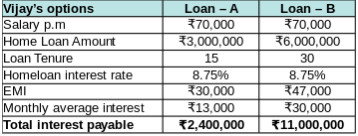How to increase Savings when Income is constant? -Part II
In the last issue, we explored 4 major leakages, which if prevented, could go a long way in saving your hard earned money. In this article, we are going to see 4 smaller but recurring leakages, which if left unnoticed, could deprive you of a significant contribution to your long term wealth. Leak 5 – Tax outgo EPF/PPF, children’s education fees & any home loan principal you pay takes care of your income tax rebate in section 80c. However, for those in the middle years of their career, who have completed their EMI liabilities, you may wonder if there are avenues beyond section 80c to save tax. This requires a fundamental shift in viewing assets as cash (or) capital assets. Cash assets such as bank FDs are draining on tax, so you may consider switching a part of them to tax efficient capital assets such as debt funds to plug the tax leakage. Lets say Guru has Rs.25Lacs in bank Fds and he falls in the 30% income tax bracket. At 7% interest, he earns Rs.1.75Lacs on whi...
